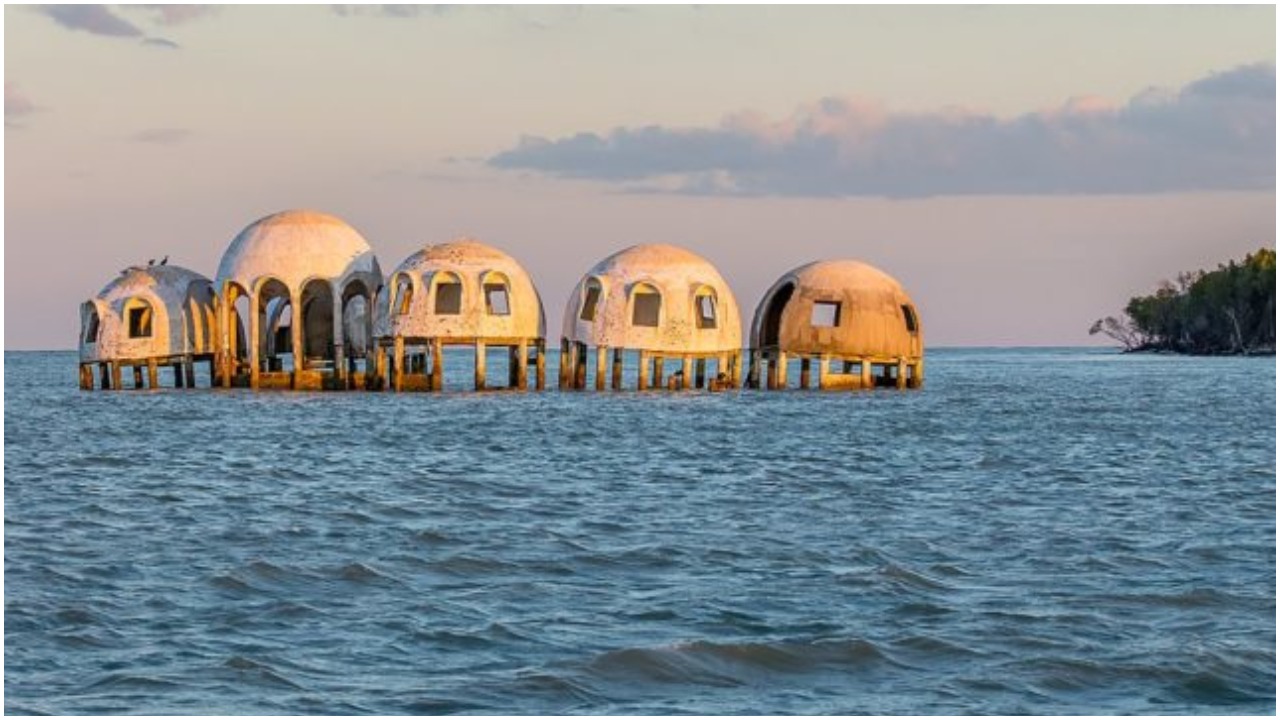Situated in the Ten Thousand Islands area in Florida is the Cape Romano Dome House, perhaps one of the most bizarre-looking residencies in the world.
Initially, the house design incorporated six domed modules on poles. However, now there are only four left. The history of this place is fascinating, but the legends aren’t true that the domes are space buildings constructed by aliens or a meeting place for a secret cult.
In 1979, oil producer Bob Lee acquired several neighboring plots of land on Morgan Island after exploring the area for the ideal site for a holiday home.
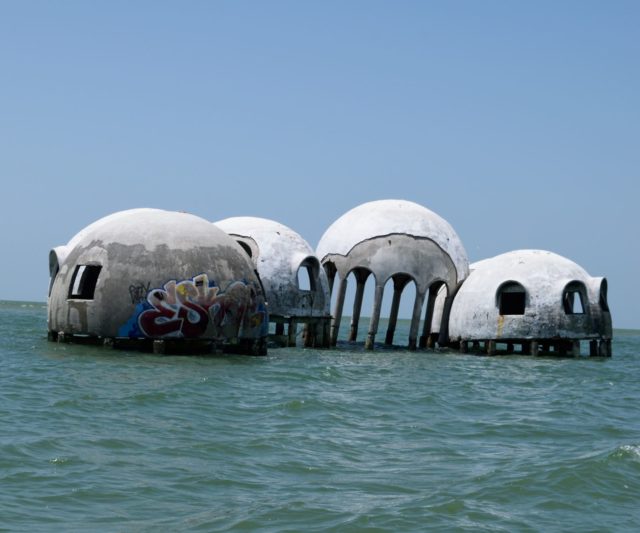
Before starting construction at Morgan Island, Lee built a full-fledged prototype of the houses he wished to construct on his land in Gatlinburg, Tennessee. In a sad twist of fate, the prototype is still standing today, while the island structure is gradually collapsing.
In 1980, construction began on a holiday home close to Morgan Island for Bob, his wife Margaret, and their children. Due to the remote location, Lee had to buy a barge to transport building materials to the construction site.
It took a year, but in 1981, six domed houses on stilts appeared on the island. The total area of this unique holiday home was 2,400 square feet. The structures were made of concrete and were painted white. In total, the rooms consisted of three bedrooms and three bathrooms.
Lee had a particular concept in mind when he constructed his vacation home: he wanted the structure to be environmentally friendly and self-sufficient. Members of his family have often spoken about him as an ingenious inventor of useful things for the home and beyond.
As well as installing underfloor heating in the rooms, Lee attached solar panels to his new home. To compensate for when they might encounter a long stretch of cloudy days, he also installed backup generators.
When construction was finally completed, the house was valued at $1.5 million. While the outside might look spartan, the interior was comfortably furnished with tiles and carpets.
As a designer, Lee did not like corners; he believed that any corners, whether in the wall or the ceiling, were wasted space. His daughter went on record saying that this design did in fact make the rooms feel large and open.
With self-sufficiency in mind, the domed buildings were also perfect for collecting rainwater which was funneled via gutters into a large tank located beneath the central dome. Once the water was purified, it could then be used as a main source for the house.
Another advantage of this style of house was that it provided good protection against hurricanes.
In 1984, the family decided to sell this holiday home despite all the efforts Lee had made. However, as soon as 1987, the house came back into the possession of the Lee family after the new owners found themselves in financial difficulties. The Lees then moved to the dome house and made it their primary residence.
The family updated the interior a bit and lived in this house until 1992, the year that South Florida was hit by Hurricane Andrew. The stability of the dome-shaped structures meant that the exterior of the building suffered only minimal damage. However, the inside was totally wrecked due to the broken windows.
At the time of Hurricane Andrew, there were two other properties on the island: a house on stilts and a pyramid-shaped house. They suffered severe damage from the hurricane and, after other misfortunes, were eventually abandoned.
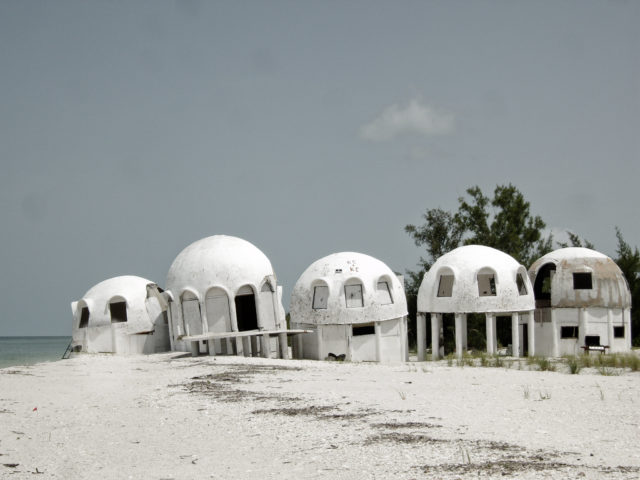
After the Lee family moved out, the house remained abandoned until 2005 when Naples resident John Tosto became interested in the property. He bought the house from the Lee family for $300,000.
His plan was to renovate the building to make it habitable once more but he ignored Lee’s advice to build a sea wall to protect the property and the island from further erosion.
By this time, the sea had already risen to meet the concrete pillars which supported the house. Instead, Tosto planned to use a crane to move house to a higher plot of land.
A few months later, Hurricane Wilma arrived, and substantial damaged was caused to the foundation of the house.
However, the new owner did not give up on his ambitions but merely boarded up the windows and carried on with his plan to move the house.
The project was delayed and ultimately abandoned not only due to the high costs involved but also because Tosto could not provide all the necessary permits for the Department of Environmental Protection as well as the Collier County Code Building and Enforcement Departments.
In 2007, the house was in such a state that an order was issued for the owner to demolish it within two years. Collier County considered this house to be both uninhabitable and unsafe.
However, Tosto did not make any attempts at demolition. Instead, the house remained abandoned, visited only by teenagers and fishermen.
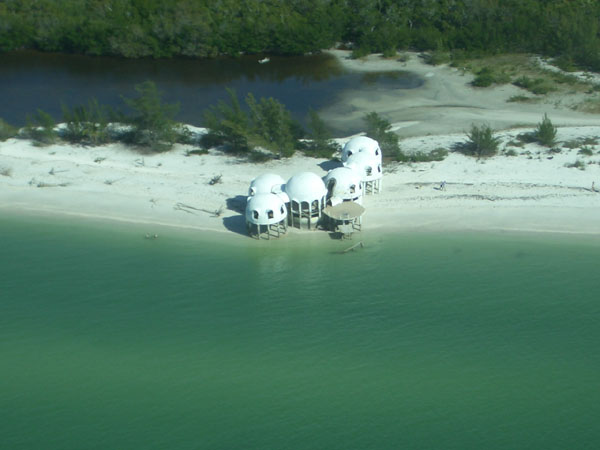
Tosto was fined $187,000 in November 2009 because the house was still not demolished. However, the district offered to withdraw the fine if he carried out the necessary demolition works.
That same year, the property was valued at just $200,000. Its monetary value was steadily decreasing as the water crept closer.
By this time, the house was already sitting in the water six feet deep. By 2014, the value had sunk to a measly $125 owing to its uninhabitable state.
In September 2017, Hurricane Irma hit the area, damaging two of the domed houses so badly that they fell into the ocean. That left only four houses remaining.
In 2018, ownership passed to the state.
Today, Lee’s house stands about 200 feet away from dry land, surrounded by water on all sides. Because it was built to be accessible by land, there are no landings or docking facilities, although that doesn’t stop some locals from mooring up there to do a spot of fishing.
Although the domes were originally built on Morgan Island, the erosion now means that the structure is closer to Cape Romano, hence its more common name of “Cape Romano Dome House.”
At one point, a non-profit organization from Naples called Oceans for Youth started a fundraiser to sink the domes fully and make an artificial reef out of them. However, the organization was unable to raise sufficient funds for such a project and the idea was abandoned.
As time goes on, these domed houses are gradually being flooded. Some people don’t want this to happen since such unique buildings attract many tourists, particularly on boat tours. In addition, many birds can be seen resting or perched on the ruins.
However, others (including Janet, Bob Lee’s daughter) feel that a truly fitting end to this piece of architectural history would be for it to sink below the waves and create a new home for all the marine animals that are already exploring the concrete pillars.
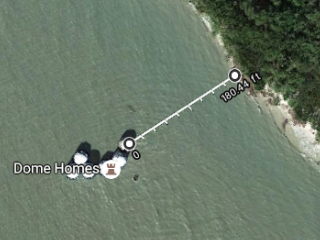
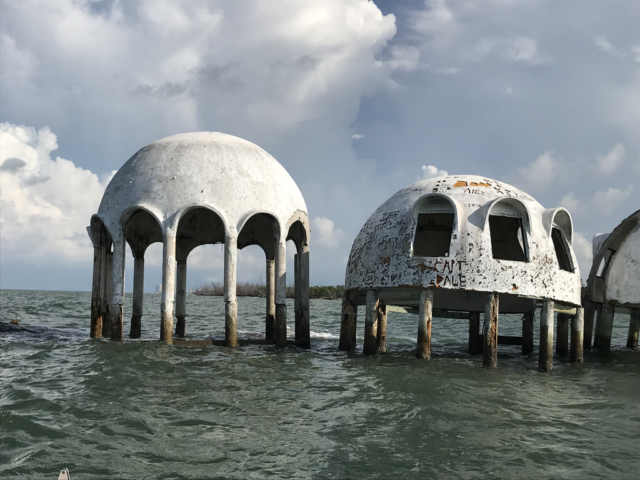
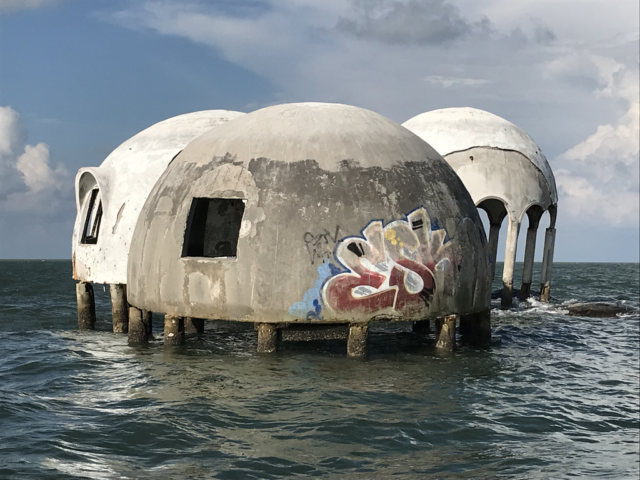
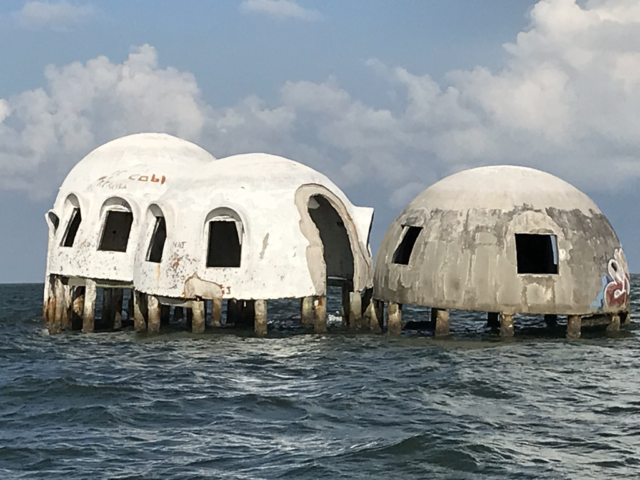
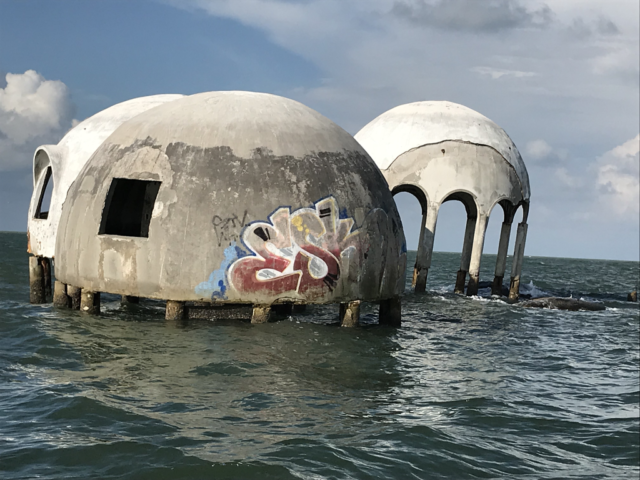
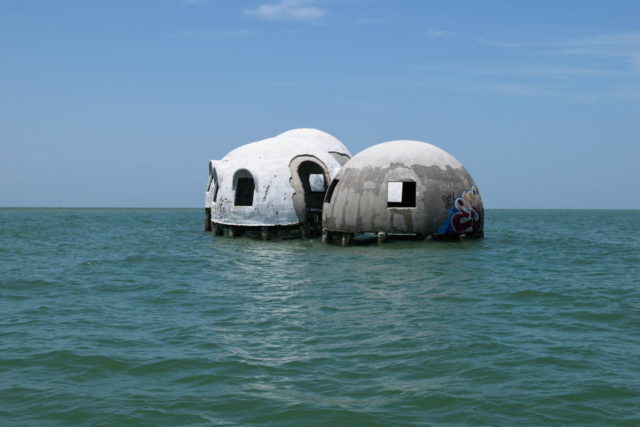
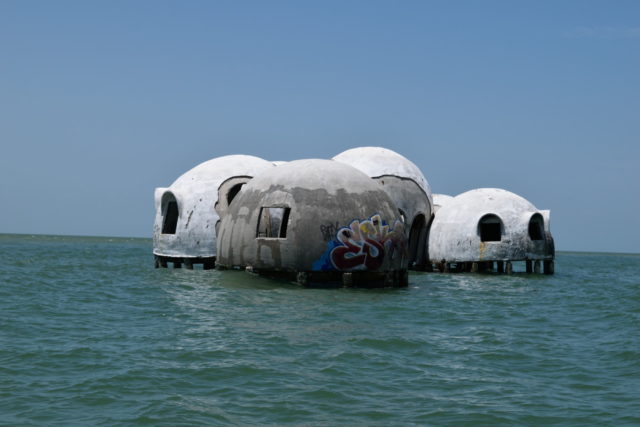
Another Article From Us: Ruins of Casa Hamilton Pumping Station in Tenerife

